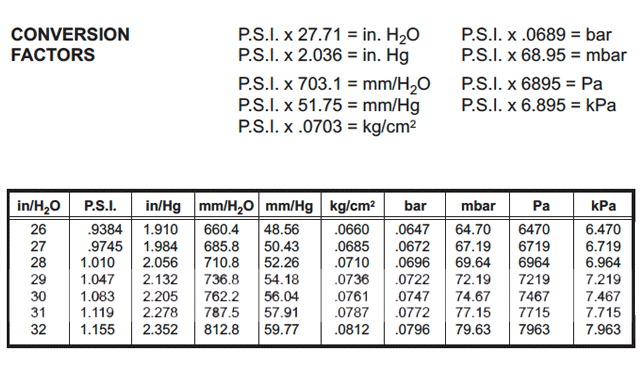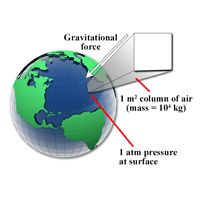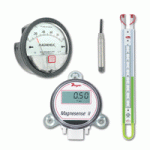 Many Dwyer Instruments, Inc. products sense and measure pressure. This includes: gages, manometers, transmitters and switches.
Many Dwyer Instruments, Inc. products sense and measure pressure. This includes: gages, manometers, transmitters and switches.
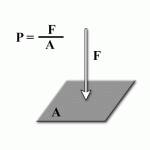 Pressure is the amount of force acting on a specific area and is equal to the force divided by the area.
Pressure is the amount of force acting on a specific area and is equal to the force divided by the area.
There are many types of pressure that are used and measured, including: atmospheric, absolute, gage, vacuum, differential and hydrostatic.
Atmospheric pressure is the pressure due to the force per unit area created by the weight of the gases in the atmosphere above the surface where it is being measured. Atmospheric pressure decreases as elevation increases, as there is less mass of gas above the point being measured.
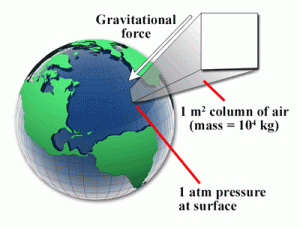
Standard conditions for temperature and pressure (STP) are used for measurements to allow for comparisons of different sets of data. Often, STP is used for calibration of pressure instruments as a standard reference. The National Institute of Standards and Technology (NIST) has established that sea-level altitude is used for standard atmospheric pressure, which is 14.696 psi or 1 atmosphere.
Absolute pressure is the pressure sensed with the zero pressure reference to a perfect vacuum. It is equal to gage pressure plus atmospheric pressure and is often stated with an “a” such as in “psia”. Absolute pressure cannot be negative in reading and accounts for atmospheric pressure changes from altitude or weather patterns. Most absolute pressure reading instruments are calibrated and sealed so that the reference side of the sensor is held at a perfect vacuum.
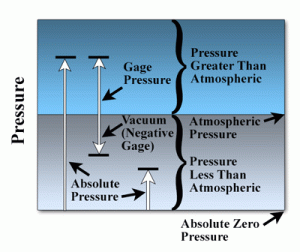
Gage pressure is the pressure sensed with the zero pressure reference to the atmospheric pressure. It is equal to the absolute pressure minus atmospheric pressure and is often stated with a “g” such as in “psig”. When reading in a vacuum, gage pressure becomes negative. Gage pressure can vary, as atmospheric pressure changes from altitude or weather patterns will affect high accuracy applications. Most pressure reading instruments read gage pressure, as the reference side of the sensor is open to atmospheric pressure.
Vacuum pressure is similar to gage pressure, as it is zero pressure referenced to atmospheric pressure. The units are positive in vacuum, and the volumes increase as pressure decreases.
Differential pressure is the difference of two pressures being sensed and is commonly stated with a “d” such as “psid”. Often, differential pressure instruments can also sense gage pressure or vacuum pressure by only connecting one pressure port and then venting the other port to atmosphere. If reading positive gage pressure, use the high pressure port. If reading vacuum pressure, use the low pressure port.
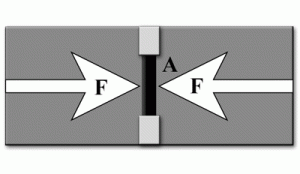
Hydrostatic pressure is the pressure created by the hydrostatic force per unit area at the base of a column of liquid. This can also be called the pressure head or head pressure, and is often referred to as the height of the fluid (e.g., inches of water column, inches of mercury, or feet of water). The measurement is dependent upon the liquid density and independent of the shape of the container. This is based on the property that pressure is equal to the density times the height of the liquid.
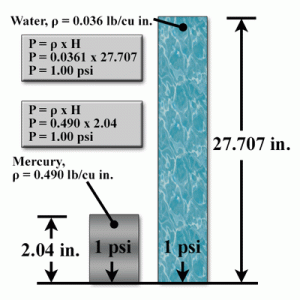
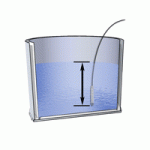
Liquid-filled manometers use this principle, as the displaced fluid height is proportional to the sensed pressure.
This principle is often used to measure the level with a gage pressure device. These can be pressure gages at the bottom of a tank, dip tubes, air bubblers or submersible level transmitters.
Dynamic and static pressure are used for velocity in flow rate calculations.
Pressure is read in many different units depending on the pressure range and if using United States customary units or the international system of units (SI). In the United States, it is common to use psi for high pressure and inches of water column for low pressure. For SI, it is common to use pascals for low pressure and bar for high pressure.
